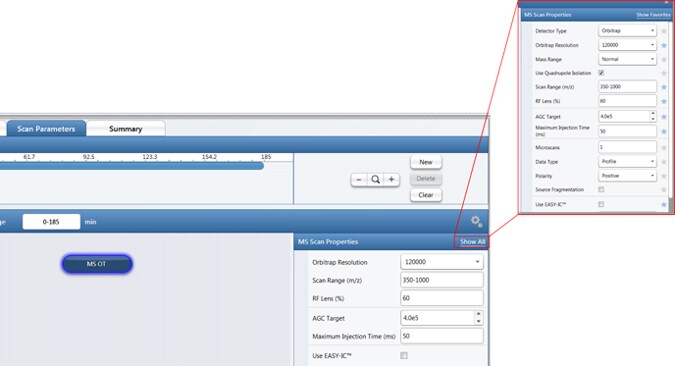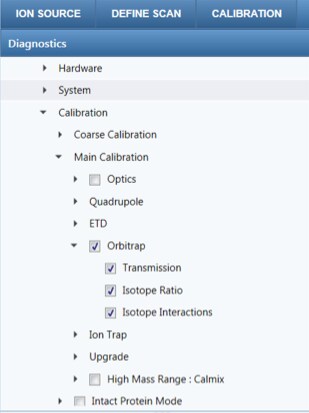Search Thermo Fisher Scientific
Orbitrap Tribrid Mass Spectrometer Support – Troubleshooting
Having difficulties with your experiment? Need guidance on maintenance tips and tricks?
We are dedicated to your success. View our expert recommendations for commonly encountered inquiries.
View the relevant questions below:
Beginning your experiment? Visit
The isotope threshold settings are typically the cause of this issue. The typical threshold is selected for larger proteomic samples that have >40% M+1 peaks. Therefore, the system will probably fail for small molecules. If MIPS isn't turned on, the system will use the 40% threshold as described. If an MIPS filter is on, the system will rely on the clustering algorithm of the FTPC data analysis to group the peaks into clusters. Anything that has the same cluster ID is then excluded, regardless of intensity.
Double check that your spray is stable and repeat the mass calibration. If it continues to fail, and exhibits large deviations from the expected mass value, then go to diagnostics and run “OT coarse mass calibration” (see below).
If the calibrant masses are found, but are continually outside of the 2 ppm specification of any target value, check spray stability. If spray stability is functioning, then run OT Transmission in Diagnostics (see below). Calibrate the eFT and OT masses.

You need to select "Show All (see below)" to see all the settings.

Yes. The yellow/orange indicates that the settings are outside the recommended range. For some applications (top-down), AGC and other parameters may be intentionally set outside the recommended ranges.
- First, make sure your spray is stable while running the eFT check.
- If the spray is stable and the check still fails, calibrate the eFT.
- If the eFT fails due to “peak splitting,” then zoom in on target ions at high resolution to see if the peak is truly splitting. If not, the eFT calibration is probably fine, and the failed calibration could be due to poor cal mix quality, poor spray stability, or interfering ions. It is best to obtain fresh cal mix, replace the infusion lines and ion transfer tube, replace the HESI needle insert, or possibly “bake out” the HESI source. Then, repeat the calibration.
- Make sure your spray is stable. If it is, perform the following diagnostics (see below): Orbitrap transmission, isotope ratio, and isotope interactions (positive mode only). Follow up with the eFT and OT mass calibrations.

Need more information? Contact us ›
For Research Use Only. Not for use in diagnostic procedures.